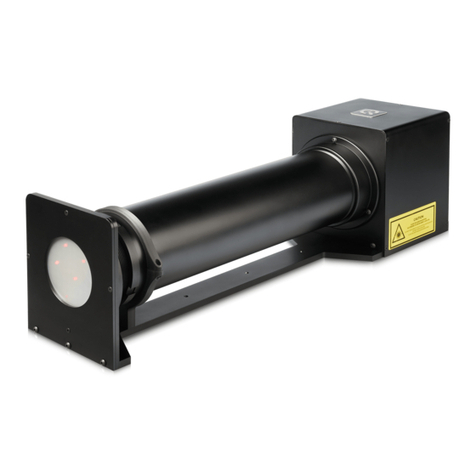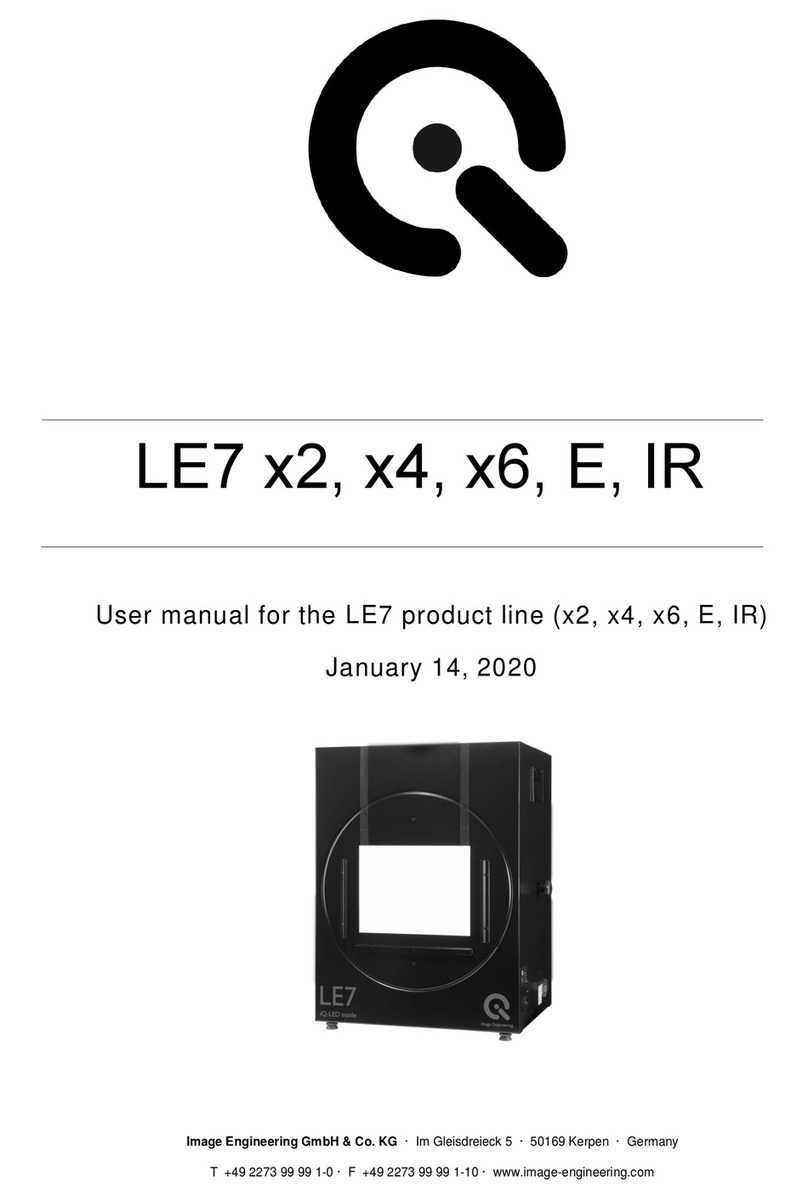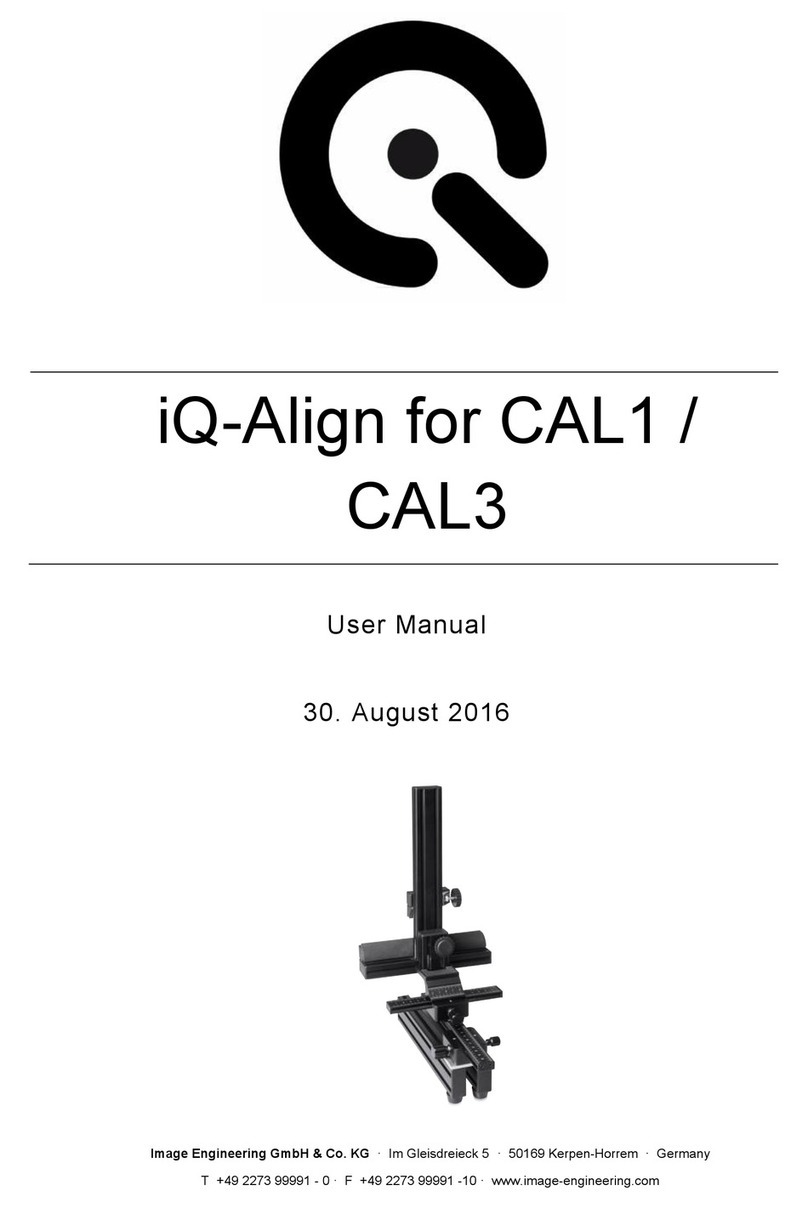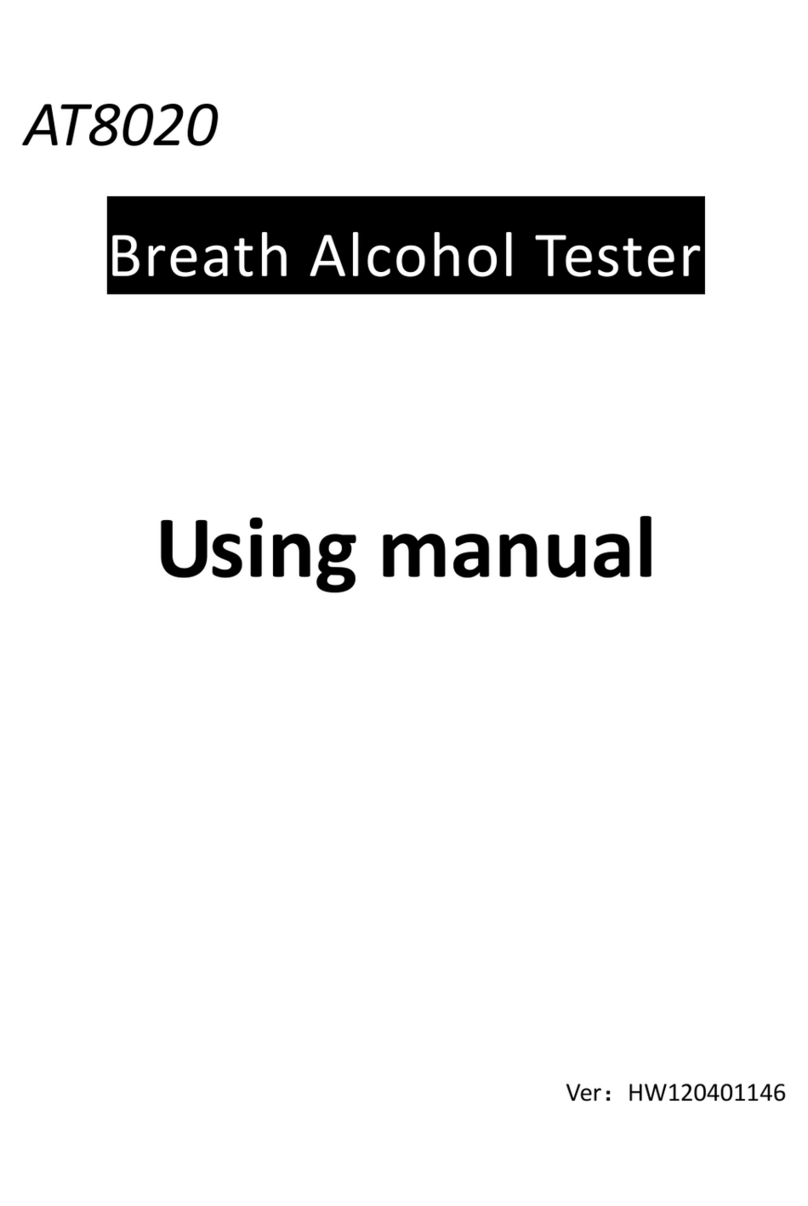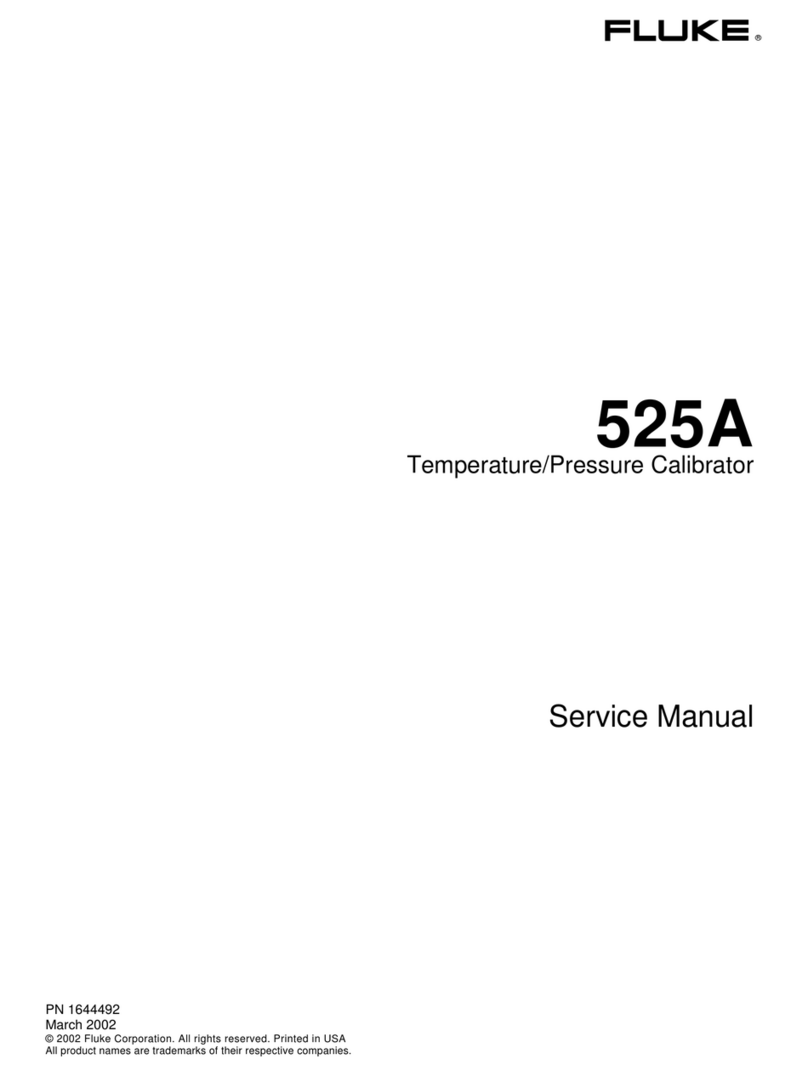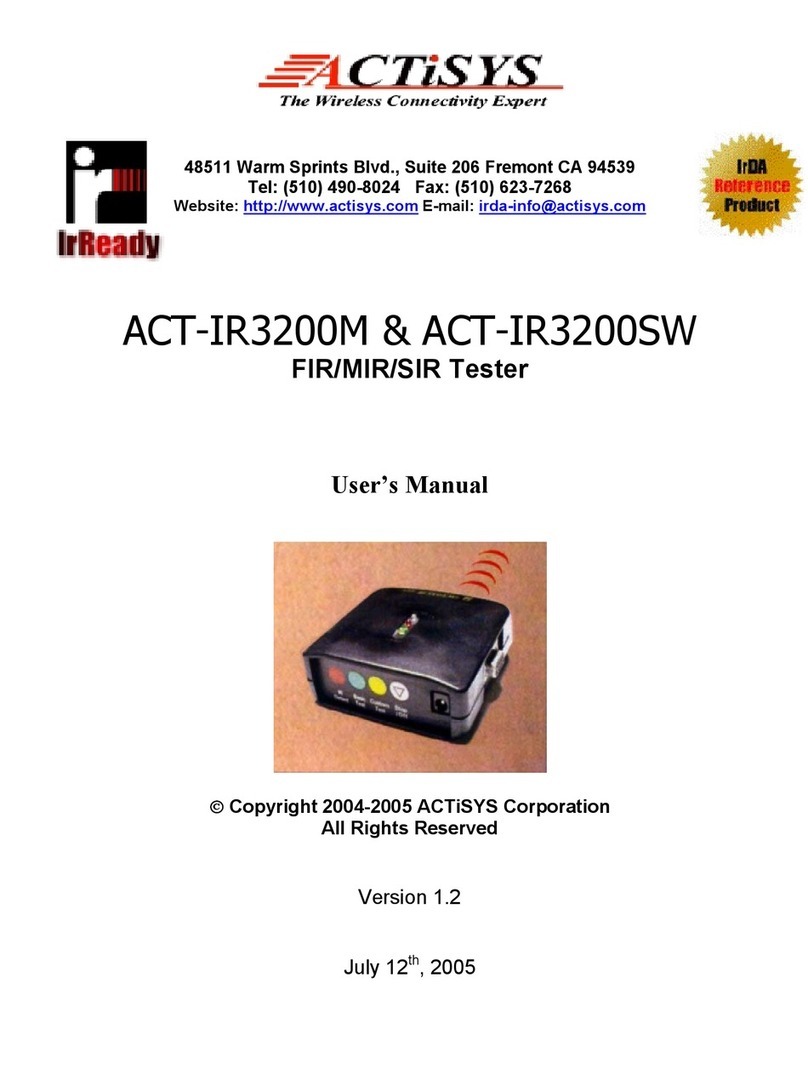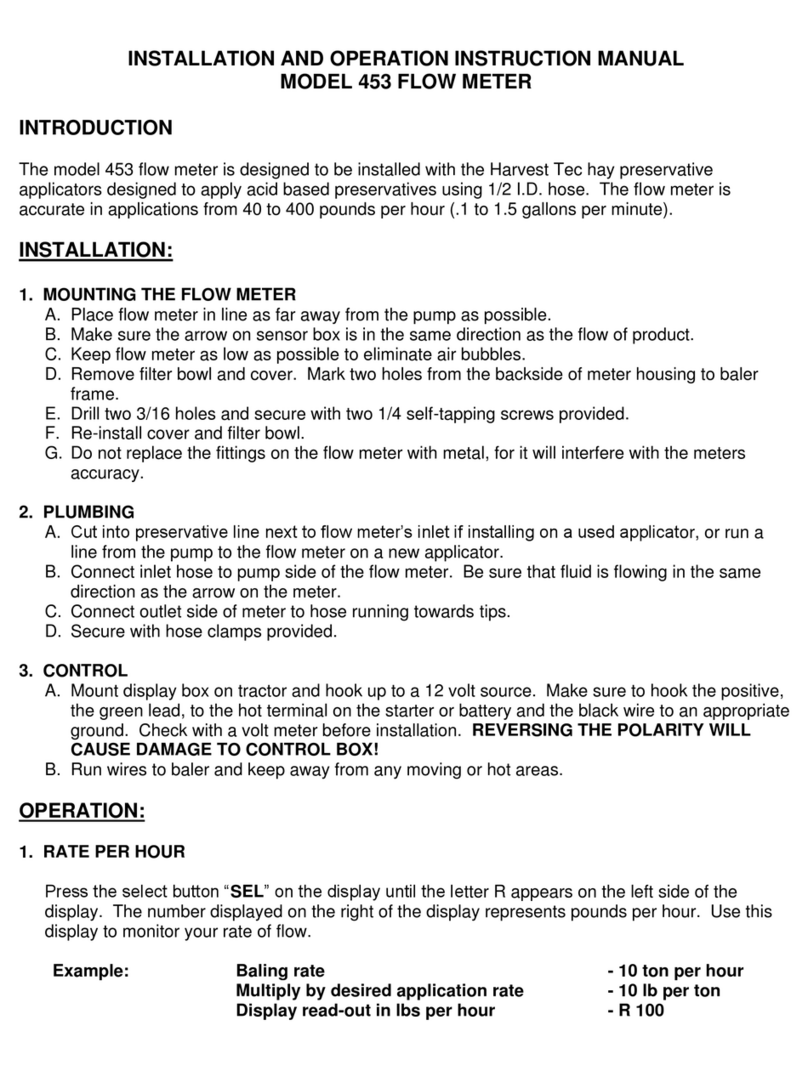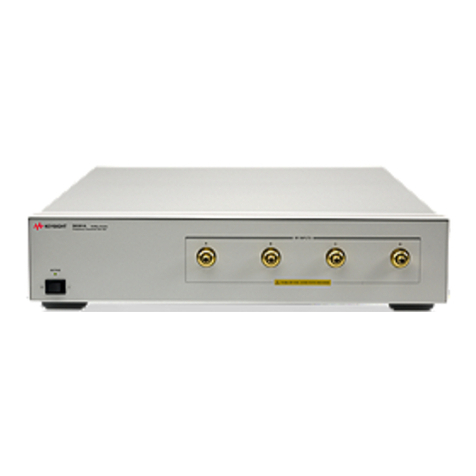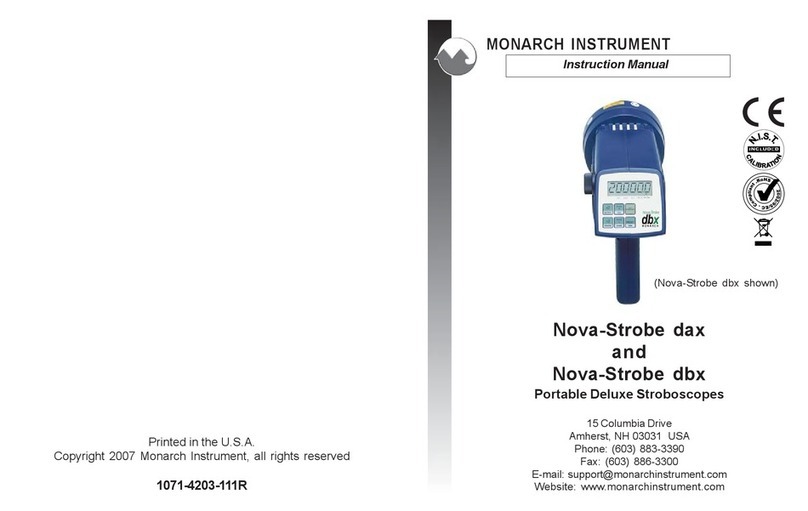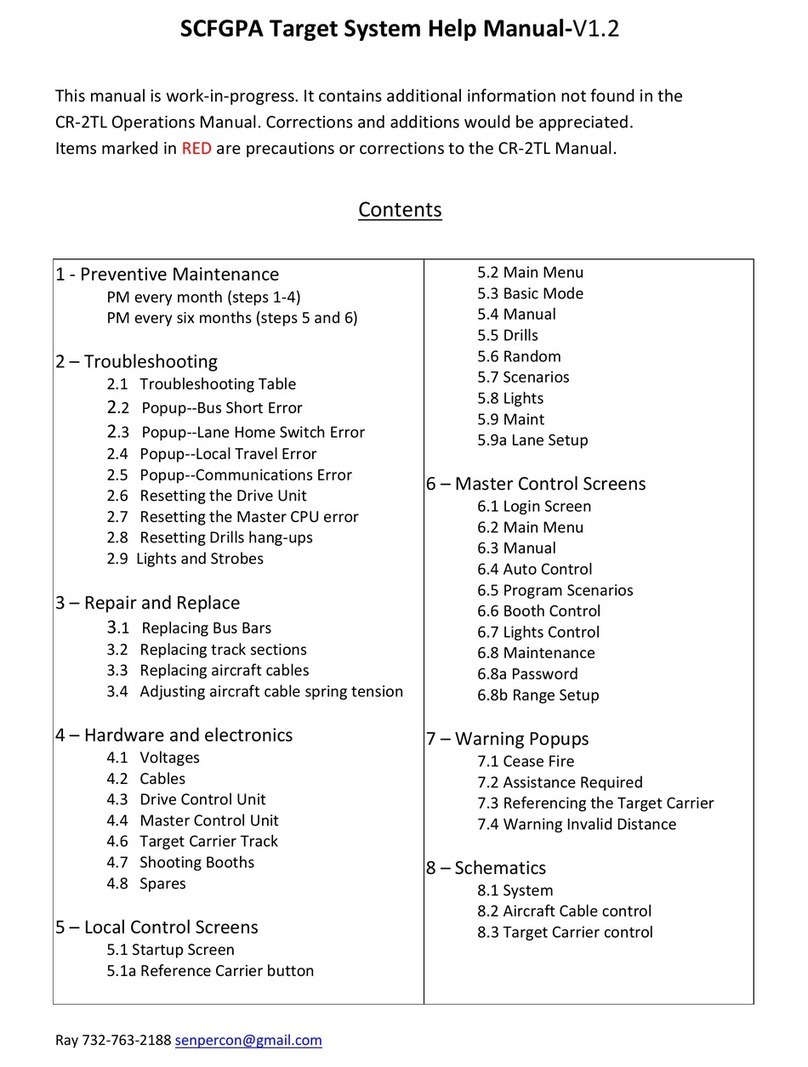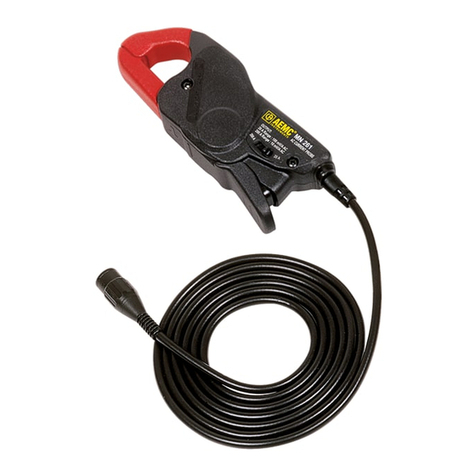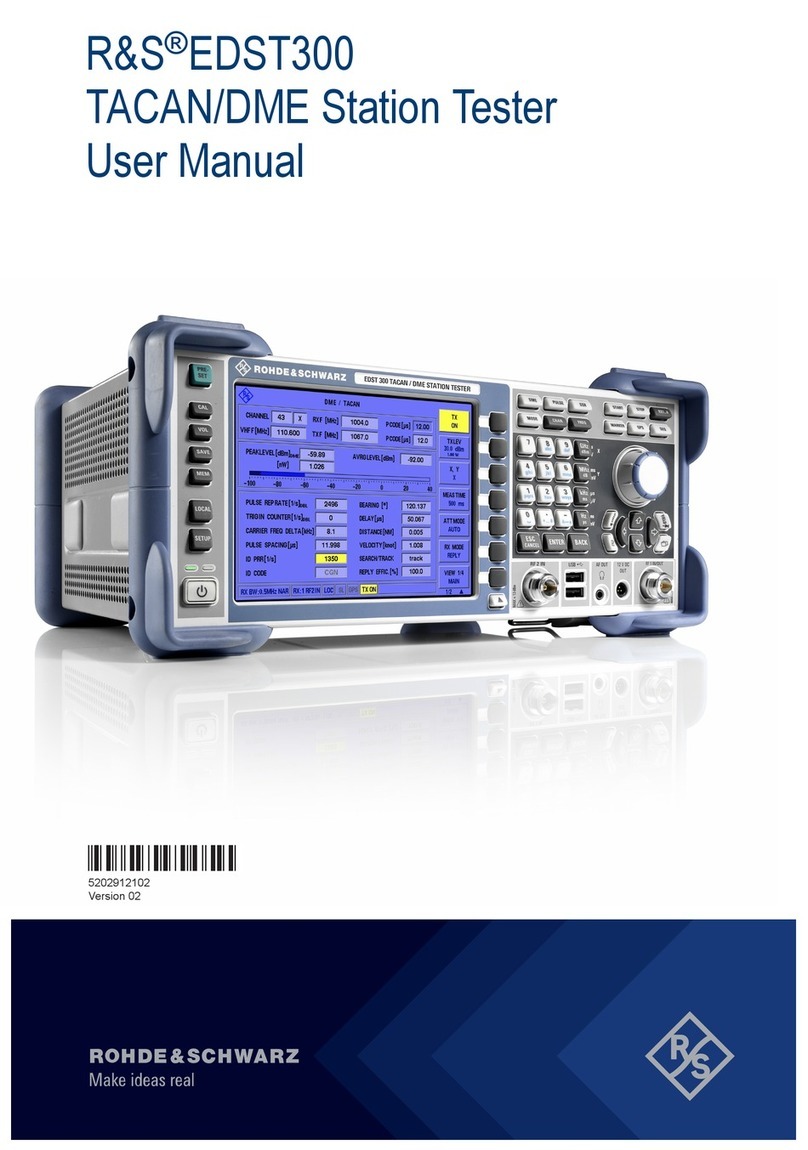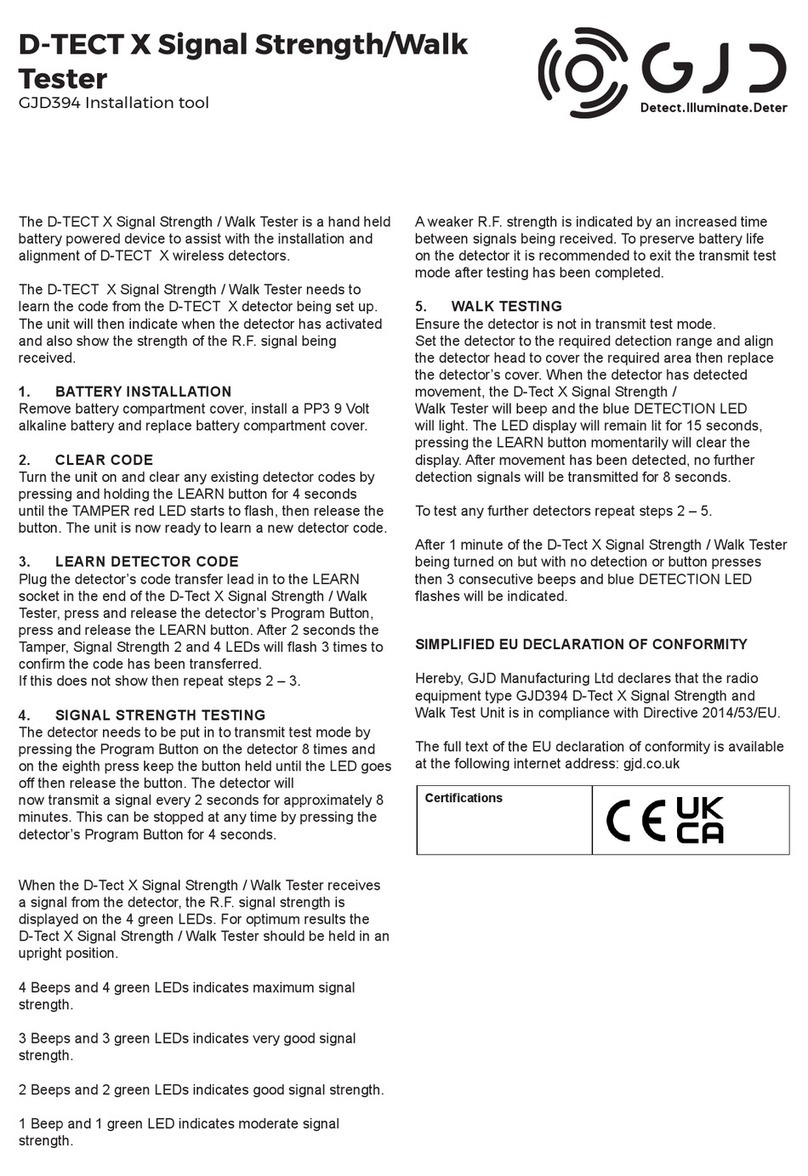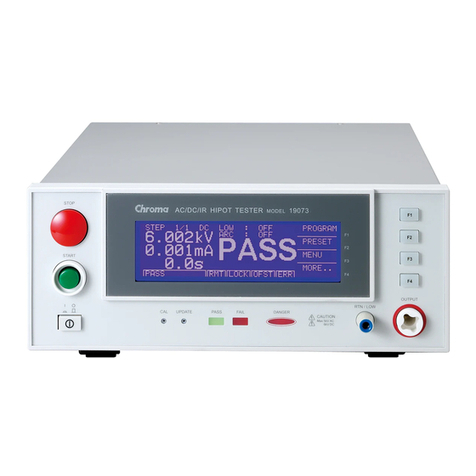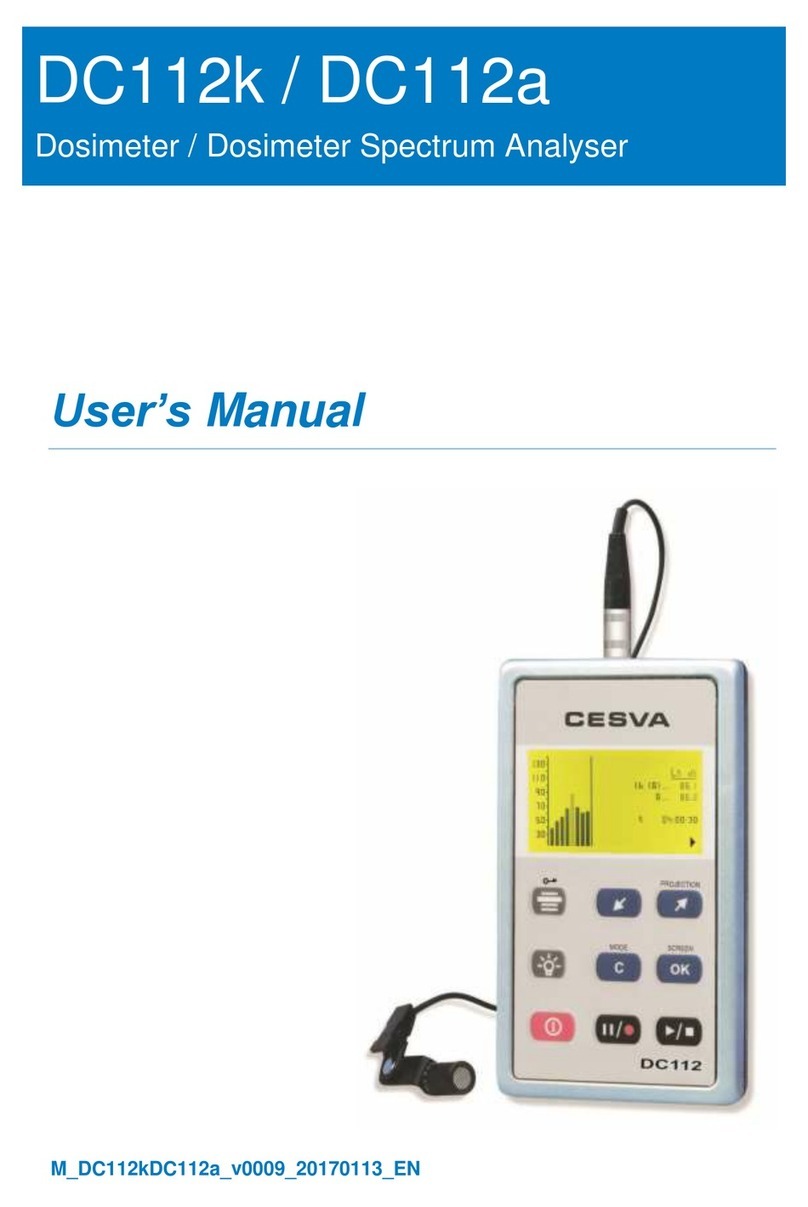Image Engineering CAL3 User manual

Image Engineering GmbH & Co. KG · Im Gleisdreieck 5 ·50169 Kerpen-Horrem ·Germany
T +49 2273 99991-0 · F +49 2273 99991-10 · www.image-engineering.com
CAL3
User Manual
3. November 2021

Image Engineering CAL3
Seite 2von 11
Content
1INTRODUCTION......................................................................................................... 3
1.1 Conformity ............................................................................................................ 3
1.2 Intended use......................................................................................................... 3
1.2.1 Departing from described setup....................................................................... 3
1.2.2 USB connection.............................................................................................. 3
1.3 General Safety Information.................................................................................... 4
2GETTING STARTED................................................................................................... 4
2.1 Scope of delivery................................................................................................... 4
3OPERATING INSTRUCTIONS HARDWARE ............................................................... 5
3.1 Overview display and ports.................................................................................... 5
3.2 Connecting the hardware....................................................................................... 6
3.3 Camera positioning................................................................................................ 7
4OPERATING INSTRUCTIONS SOFTWARE................................................................ 8
4.1 Requirements........................................................................................................ 8
4.2 Software installation .............................................................................................. 8
4.3 Starting the system................................................................................................ 8
4.3.1 Spectrometer settings..................................................................................... 8
4.3.2 iQ-LED calibration........................................................................................... 8
4.4 Low intensity use................................................................................................... 9
5ADDITIONAL INFORMATION....................................................................................10
5.1 Maintenance........................................................................................................10
5.2 Care instructions ..................................................................................................10
5.3 Disposal instructions.............................................................................................10
6TECHNICAL DATA SHEET........................................................................................11

Introduction
Image Engineering CAL3
Seite 3von 11
1 INTRODUCTION
Important information: Read the manual carefully before using the device.
Inappropriate utilization may cause damages to the device, to the DUT (device under test)
and/or other components of your setup.
Keep these instructions in a safe place and pass them to any future user.
1.1 Conformity
We, Image Engineering GmbH & Co. KG, hereby declare, that the CAL3 corresponds to the
essential requirements of the following EC directive in its current version:
•Electromagnetic Compatibility - 2014/30/EU
•RoHS 2 - 2011/65/EU
•Low Voltage - 2014/35/EU
1.2 Intended use
The integrating sphere is designed as a calibration light source, based on iQ-LED technology for
wide field of view cameras. It includes a micro spectrometer and is controlled with the iQ-LED
control software or via dip switches when not connected to a PC.
•Only suitable for indoor use.
•Place your system in a dry and constant tempered environment without any interfering
light.
•The optimal ambient temperature range is 22 to 26 degrees Celsius. The maximum
ambient temperature range is 18 to 28 degree Celsius.
•The optimal system temperature range, displayed in the software user interface, is
between 35 and 50 degrees Celsius. The system has internal temperature
management, if there is any error regarding the internal temperature, you will get a
warning message and the system will automatically shut off to avoid any damage.
1.2.1 Departing from described setup
The following steps must be performed in the correct chronology to allow a frictionless
commissioning. Departing from the chronology may lead to an incorrect working device.
1. Install the iQ-LED software
2. Connect CAL3 to power and via USB to the PC
3. Switch CAL3 on; the system drivers will now be installed
4. After drivers are installed completely, start the software
1.2.2 USB connection
Only appropriate USB connection allows error-free operation of CAL3. Use delivered USB
cables. If you need to extend the USB connection to longer distances, please check if powered
hubs/repeaters are necessary.

Getting started
Image Engineering CAL3
Seite 4von 11
1.3 General Safety Information
WARNING!
Some LEDs are emitting invisible light in the IR and UV near area.
•Do not look directly into the emitted light or look through the optical LED system.
•Do not look directly in the open sphere or light source when using high intensities or
sequences with low response time.
•Do not open the device without any instructions from the Image Engineering support
team or when connected to the power supply.
2 GETTING STARTED
2.1 Scope of delivery
•integrating sphere
•spectrometer (built-in)
•power cord
•USB cable
•control software
•calibration protocol
Optional equipment:
•iQ-Align for CAL3 for a quick and easy camera alignment.
•EX2spectrometer for external measurments.
•iQ-Trigger: The iQ-Trigger is a mechanical finger that can
press the release button within 25 ms. When working with touchscreens, exchange the
solid fingertip for a touch-pen tip.
•iQ-Analyzer software (shading module)
This module includes a special chart layout file that allows analysis of images with and
without a keyhole effect.
iQ-Align for CAL3

Operating instructions hardware
Image Engineering CAL3
Seite 5von 11
3 OPERATING INSTRUCTIONS HARDWARE
3.1 Overview display and ports
•1 x USB port for software control
•1 x port for power adapter
•1 x trigger output
Use the control panel to set different light settings for the iQ-LED´s:
•with the “+” and “-“ buttons you can switch between 44 saved illuminants
•numerical display to show the storage of the illuminants
•with the play and stop button you can start and stop a saved light sequence with
different illuminants (it is possible to save one sequence on the device)
•with the power button, you can turn on and off the light
•there are three pre-stored illuminants on your device (the intensity of each illuminant is
shown in the acceptance protocol of your device):
o1: illuminant A (default illuminant)
o2: illuminant D50
o3: illuminant D75
Note: To store your own generated illuminants or sequernces on your device, please follow the
instructions in the iQ-LED SW user manual.

Operating instructions hardware
Image Engineering CAL3
Seite 6von 11
Wiring examples for the trigger output:
Trigger OUT wiring examples
The default duration value for the trigger output is 500 ms. This value can be modified with the
iQ-LED API. A signal is send out to the trigger output while changing the illuminats or the
intensity of LED channels. It can be used to synchronize your test setup. For example with an
iQ-Trigger. (See 2.1 optional equipment)
3.2 Connecting the hardware
1. Connect the power cord to the power supply on the back of CAL3.
2. Connect the USB cable to the CAL3 and your PC.
3. Turn on the CAL3; the power switch is located beside the power supply.
4. The system will install the spectrometer and iQ-LED drivers on your PC, this will take a few
seconds.
5. You can check the installation in your hardware manager.
Hardware Manager: active iQ–LED and spectromete

Operating instructions hardware
Image Engineering CAL3
Seite 7von 11
3.3 Camera positioning
Requirements on your camera (device under test, DUT):
•maximum lens diameter: 37 mm
•minimum lens depth: 10 mm
Make sure, that
•your DUT is as close as possible to the CAL3 opening
•the lens is exactly in the middle of the diffusor
•the front surface of the lens is least 10 mm inside the diffusor
•for lenses >= 160° FOV (field of view) it is recommended to bring the lens at least
20 mm inside the diffusor
Not fulfilling these requirements will lead to inhomogeneous illuminated field of view. The
easiest way to align the camera correctly is to use the optional iQ-Align. (see 2.1)
Positioning of DUT in front of CAL3

Operating Instructions Software
Image Engineering CAL3
Seite 8von 11
4 OPERATING INSTRUCTIONS SOFTWARE
4.1 Requirements
•PC with Windows 7 (or higher) operating system
•one free USB port
4.2 Software installation
Install the iQ-LED control software before connecting the hardware. Follow the setup instruction
from the iQ-LED control software manual.
4.3 Starting the system
Start the iQ-LED software by clicking the ‘iQ-LED.exe’ or the iQ-LED icon on your desktop.
Follow the iQ-LED software manual to control the CAL3.
NOTE
The iQ-LED devices can only operate with high precision, whensetup and calibration
are performed correctly.
Consult the iQ-LED software manual for a comprehensive description and read it
carefully.
4.3.1 Spectrometer settings
The iQ-LED software (see iQ-LED software manual) automatically generates the best
spectrometer settings for you lighting conditions after pressing the “auto detect” button. For
special applications, it is also possible to set the spectrometer settings manually. If you have
further question, please contact the Image Engineering support.
4.3.2 iQ-LED calibration
The individual LED lights of the iQ-LED inside the CAL3 depends on many different types and
wavelengths. Some LEDs will change their intensity level and peak wavelength slightly in the
first 500-600 working hours because of a burn-in effect.
The LEDs will also degrade in intensity during their lifetime. To make sure that all
measurements including the auto-generated illuminants and the standard illuminants, are
correct, you have to perform a spectral calibration regularly.
You must also consider the degradation of the LED when saving self-defined presets. If you
save a preset with LED channels that uses its maximum intensity, the possibility exists that this
intensity cannot be reached after the burn-in time or the long-time degradation of the LED. In
this case, you will get a warning message from the iQ-LED control software.

Operating Instructions Software
Image Engineering CAL3
Seite 9von 11
During the first 500-600 working hours, we recommend performing a spectral calibration every
50 operating hours.
After the first 500-600 operating hours, a calibration of every 150 working hours suffices.
Other factors that indicate the need for a spectral calibration: unsatisfactory illuminant
generation, the aberration of the intensity values, or a spectral curve that does not fit with the
predefined standard illuminants of the corresponding preset.
•the spectrometer works correctly
•the spectrometer settings are correct
•all LED channels work correctly
•the dark measurement is correct
•your measurement environment is correct
•your ambient temperature is correct
How to perform the spectral calibration is described in the iQ-LED control software manual.
4.4 Low intensity use
When using your system with very low intensity, the spectral measurement values will start to
fluctuate. The lower the intensity, the higher the fluctuation. The generated light is still stable up
to a certain point. The fluctuation of the values is caused by the noise of the spectral
measurement of the internal spectrometer. The light intensity will continue to get lower when the
influence of the noise continues to get higher. When using standard illuminants with an intensity
lower than 25 lux, it will no longer be possible to get a correct value.

Additional information
Image Engineering CAL3
Seite 10 von
11
5 ADDITIONAL INFORMATION
5.1 Maintenance
Your spectrometer comes fully NIST traceable calibrated.
The spectrometer requires a recalibration once a year, regardless of the operating hours. If a
spectrometer calibration is necessary, please contact Image Engineering.
Please send the complete device to Image Engineering.
Pack the CAL3 with a notation for calibration in the hard case it was delivered in.
Please contact support@image-engineering.de for conditions and procedure.
After the spectrometer has been calibrated, perform a spectral calibration (iQ-LED calibration).
We suggest you also do a new generate for all illuminants you use
5.2 Care instructions
•Do not touch, scratch, or pollute the diffusor.
•If there is any dust on the diffusor, clean it with an air blower.
•Do not remove the fiber from the spectrometer. Otherwise, the calibration is invalid, and
the spectrometer has to be recalibrated!
•Only store and transport the CAL3 in the delivered hard case.
5.3 Disposal instructions
After the service life of CAL3, it must be disposed of properly. Electrical and electromechanical
components are included in CAL3. Observe your national regulations. Make sure that CAL3
cannot be used by third parties after disposing of it.
Contact Image Engineering if assistance for disposal is required.
Other manuals for CAL3
1
Table of contents
Other Image Engineering Test Equipment manuals

